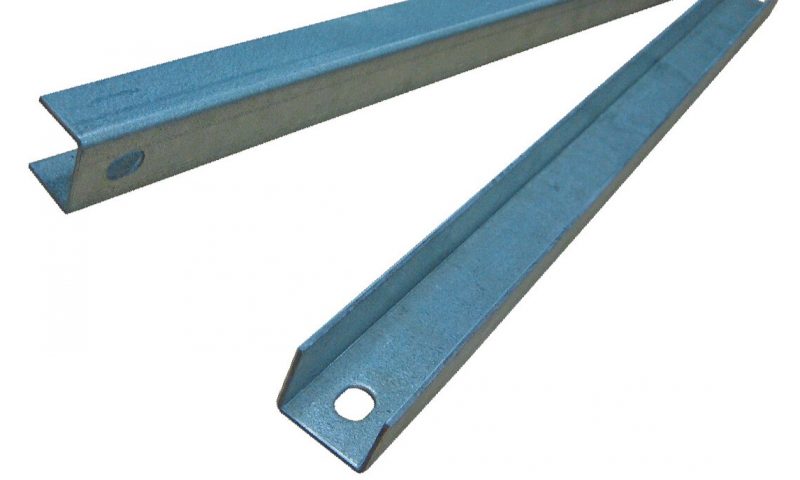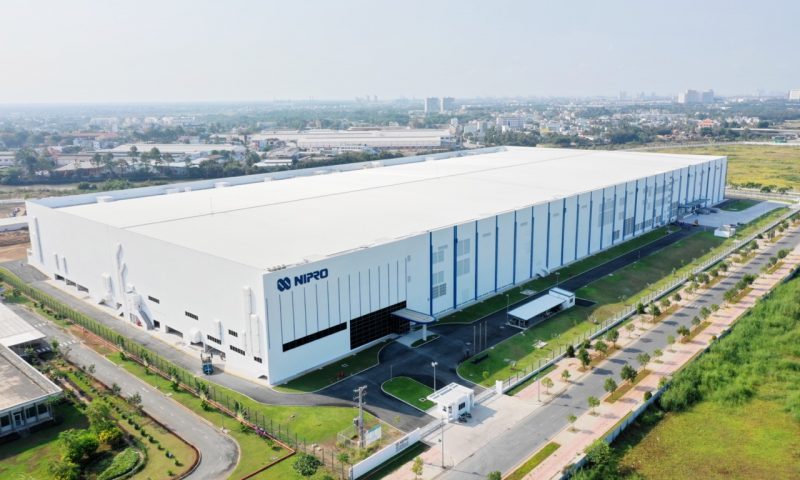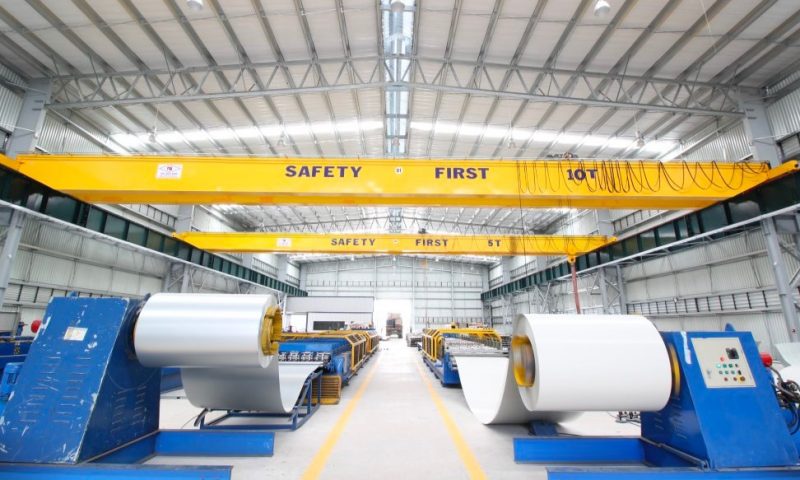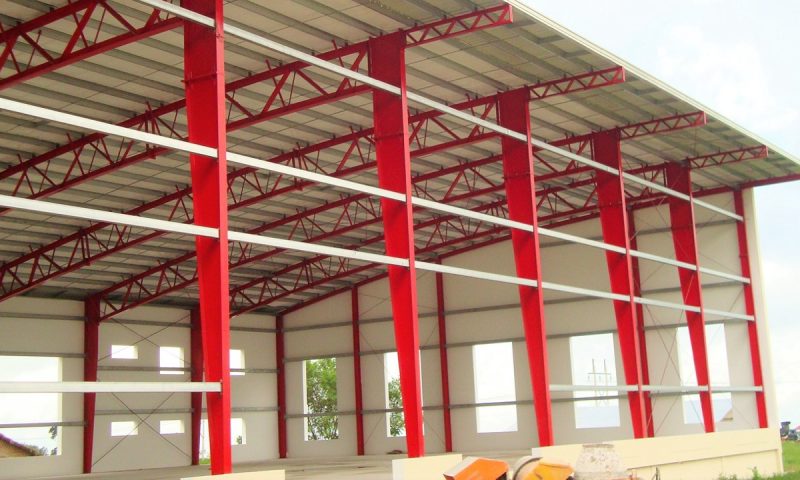The factories with roofs made of corrugated iron regularly face the common issue of the interior becoming excessively hot during the summer. Therefore, businesses need to implement reasonable measures to reduce the temperature, creating comfortable and pleasant working conditions for laborers. In the following article, Pebsteel will review 5 practical and affordable ways to reduce the heat from corrugated iron roofs.
Read more: Durable and Aesthetic Prefabricated Wall Materials
1. Why is it necessary to prevent heat from corrugated iron roofs?
The factory has a high concentration of workers and powerful machinery. As a result, the factory’s interior temperature stays high for extended periods, and the space is cramped and enclosed. These circumstances may lead to the following problems:
- Machinery and equipment are more susceptible to damage due to prolonged exposure to high temperatures.
- The effects of high temperatures may cause workers to be less productive.
- Products are more likely to be damaged.
Therefore, implementing measures to prevent the corrugated iron roof of the factory from overheating is extremely important, as it helps enhance productivity and efficiency in the production process.
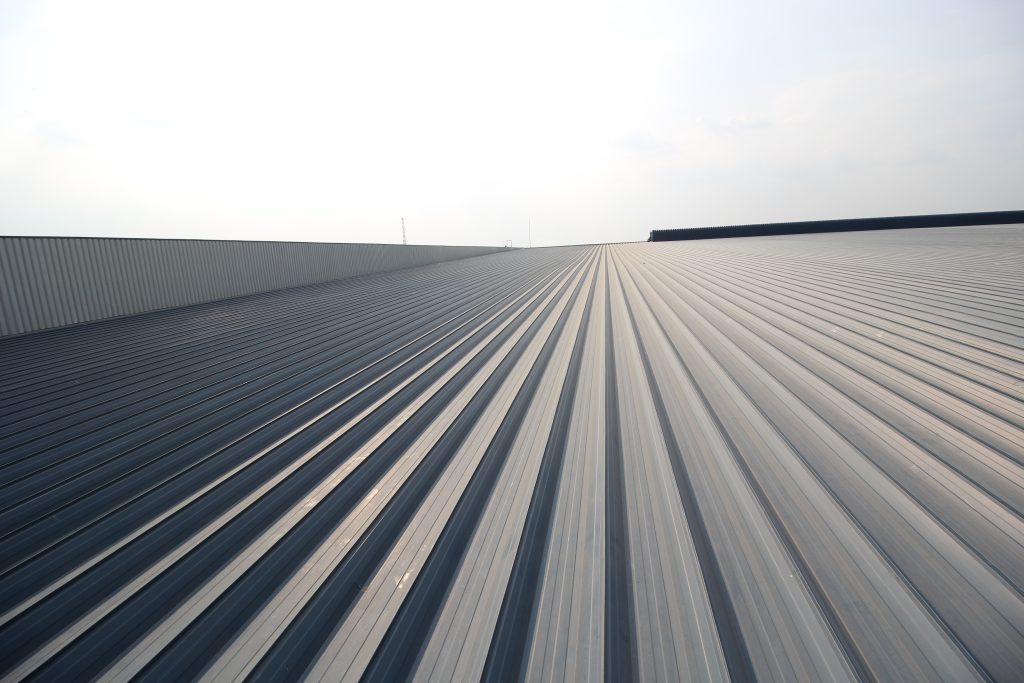
Implementing heat insulation for the corrugated iron roof of the factory aims to enhance productivity and efficiency in the production process
2. 5 ways to reduce the heat on corrugated iron roofs
2.1. Installing mist fan
One of the effective measures to reduce the temperature inside a factory with a corrugated iron roof is using a water mist fan system. This system operates by pumping water up and combining it with the airflow from the fan, creating a well-ventilated space and maintaining appropriate humidity levels. The water mist fan also helps lower the temperature inside the factory. However, using a water mist fan can be costly and requires a continuous water supply. Therefore, factory owners with limited budgets may consider alternative options.
2.2. Installing a mist spraying system on the factory roof
One of the best methods for addressing heat is the factory roof misting system. This method can lower the factory roof’s temperature, especially on scorching days. However, with this cooling method, the air inside the factory doesn’t experience significant changes. Therefore, the misting system only partially reduces the temperature and cannot cool the entire factory space.
2.3. Installing ventilation system
The ventilation system can eliminate moisture, hot air, and offensive odors inside the factory and is an alternative to using windows, air ducts, fans, etc. Its primary function is circulating air inside the factory and slightly lowering the temperature. As a result, the ventilation system’s ability to reduce heat is similar to other approaches.
2.4. Using heat-insulating paint
Using heat-insulating paint for the corrugated iron roof and factory walls is also an effective method of preventing overheating. Inside the heat-insulating paint, there are membrane-forming substances, which create a protective layer to avoid heat absorption for the factory’s corrugated iron roof.
2.5. Using cold and heat-insulating corrugated iron
Instead of constructing the factory and installing heat-insulating materials for the corrugated iron roof, utilizing cold-rolled or thermal-insulated steel during the construction phase can maximize cost savings while ensuring adequate heat and insulation resistance.
You can choose between two types of corrugated iron roofs to cover the factory:
- Aluminum-zinc alloy coated steel sheet: This corrugated iron roof has good cooling properties. However, on hot sunny days, it can also become hot. Therefore, if you choose an aluminum-zinc alloy-coated steel sheet for the factory, consider using a type coated with heat-insulating paint or adding a foam layer to enhance its heat resistance.
- 3-layer aluminum-zinc alloy coated steel sheet: This type of corrugated iron roof is designed with an insulating foam layer sandwiched between two layers of cold-rolled corrugated iron. This design helps the roof prevent a large amount of heat from being absorbed into the inside of the factory, ensuring that the air inside remains cool.
In addition, consider using insulation layers to enhance the effectiveness of heat resistance in the factory. Below are 2 types of materials applied by Pebsteel in most of their pre-engineered steel building projects:
- PebInsul: This insulation material is made from fine, inorganic glass fibers known for their heat resistance and fireproof properties. Typically, PebInsul is applied to insulate roofs and walls.
- PebFoam: This is a premium insulation material manufactured using cross-linked polyethylene foam technology and coated with a layer of pure aluminum for added rigidity on the outer layer. PebFoam stands out with its 3-in-1 functionality: insulation, odor prevention, and moisture resistance.

Using cold-rolled steel or thermal-insulated steel from the construction phase can save costs while still ensuring effectiveness in heat resistance and insulation
3. Some notes on heat protection of factory corrugated iron roofs for some export industries
When choosing a heat insulation method for the corrugated iron roof of export-oriented industries, especially in the seafood and leather footwear sectors, there are some considerations that contractors need to pay attention to to ensure the quality of the construction.
3.1. Marine product industry
- Temperature and humidity requirements: In the marine product industry, certain fish species need to be preserved in specific fresh or saltwater environments with precision. The contractor needs to select an appropriate insulation system to maintain this condition
- Selecting suitable materials: For the aquatic environment, contractors should opt for corrosion-resistant materials from water or salt.
- Ventilation system and water mist fan: These systems will help maintain aquatic species’ ideal temperature and humidity.
3.2. Leather footwear industry
- Production process and temperature requirements: The leather footwear manufacturing industry employs various machinery and technologies. Choose an insulation method to ensure the production space maintains an appropriate temperature level.
- Humidity management: Humidity is a significant factor in the leather footwear industry, as product quality depends significantly on the air’s moisture content. Therefore, the heat insulation system needs to align with this requirement.
As mentioned, using various types of corrugated iron roofs is an extremely effective solution for reducing the temperature inside the factory. LokSEAM® roof panels are the optimal choice for industrial workshop projects, with quality certified by FM Approved. This product not only exhibits outstanding heat and corrosion resistance but also helps minimize issues like water leakage or expansion due to temperature.
LokSeam roof sheeting, PebLeed, a material with excellent heat-reflective properties that effectively combats heat in warehouses, is widely applied in most projects Pebsteel executed. Pebsteel takes pride in its many years of experience and a team of skilled engineers who can meet the most stringent requirements when constructing factories for export-oriented industries.

Pebsteel takes pride in being able to meet the most stringent requirements when constructing factories for export-oriented industries
4. Conclusion
Above are the details about 5 ways to reduce the heat on corrugated iron roofs and some considerations when applying them to factories in specific export-oriented industries. If customers are looking for comprehensive solutions for Pre-engineered Steel Buildings and Steel Structures, please contact Pebsteel via email at Marketing@pebsteel.com.vn or by phone at +84 908 883531 for an immediate consultation.


